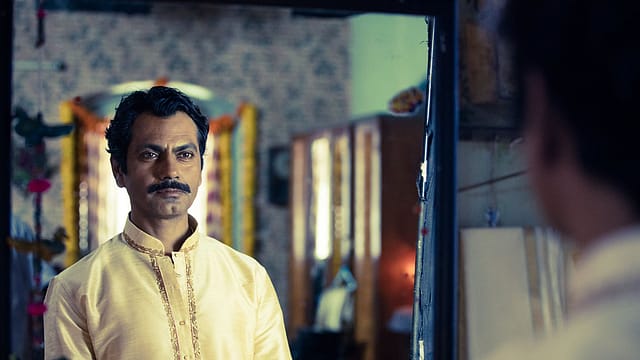Netflix looks at the bigger picture in India
ADVERTISEMENT

When Netflix launched its first Indian show, Sacred Games, last week, the question everybody was asking was: Can Netflix beat Bollywood? It’s obviously too early to answer that, but going by the response to the Mumbai underworld drama series so far, the streaming giant has clearly barged into Bollywood territory with a bang.
Sacred Games is certainly a game-changer. It’s Netflix’s first original series from India; and it’s been dubbed in four languages and released in 190 countries. The edgy crime thriller, adapted from Vikram Chandra’s 2006 novel, is classic Bollywood: It is a Mumbai mob story revolving around the lives of an honest policeman and an underworld don with high levels of brutality, profanity, and sexual violence.
If the story was made for Bollywood to begin with, Netflix’s decision to rope in big stars like Nawazuddin Sidiqui and Saif Ali Khan, along with director Anurag Kashyap, is just the cherry on top.
Netflix is betting big on Sacred Games—and its plans to roll out more Indian content. “Netflix—we’re an on-demand service, and we’re trying to create stories that people are really going to want to binge on, and so we’re looking for sweeping complex narratives, which Sacred Games certainly is,” Erik Barmack, vice-president of global content at Netflix, told The Quint in an interview.
January 2026
Netflix, which has been in India for a decade, has successfully struck a balance between high-class premium content and pricing that attracts a range of customers. Find out how the U.S. streaming giant evolved in India, plus an exclusive interview with CEO Ted Sarandos. Also read about the Best Investments for 2026, and how rising growth and easing inflation will come in handy for finance minister Nirmala Sitharaman as she prepares Budget 2026.
“We wanted to find a show that touched on a number of issues that we thought were relevant to modern society, not just India, but on a global basis, and its discussions on crime, its discussions on religion, on media, all these things combined made for a super interesting narrative,” he added.
It will be a hard slog. At the moment, Netflix only has around a million customers in India, and according to Bloomberg, it’s hoping its next 100 million will come from India. But is Netflix being too ambitious? Competition in India’s nearly $300 million streaming market is pretty hot and Netflix is lagging way behind competitors like Star India’s Hotstar, Amazon Prime Video, and ALTBalaji. Hotstar is far ahead in the game with some 75 million subscribers while ALTBalaji has around 2.5 million.
An unfazed Netflix is hoping to catch up with a string of Indian programmes it has lined up. Sacred Games will be followed next month with its first Indian horror series, Ghoul, in which a prisoner at a remote military interrogation centre turns the tables on his interrogators. It has also commissioned an adaptation of Aravind Adiga’s award-winning novel, The White Tiger, and will be adapting Salman Rushdie’s epic Midnight’s Children, the story of an Indian family woven around a series of events from the Partition to the Emergency.
So far so good. But video streaming companies don’t have an easy ride in India. Many of them see a massive market in the country’s population of over 1.2 billion people. However, less than 400 million people have access to broadband in India and more than 600 million remain unconnected.
The numbers spell opportunity, but will Netflix’s foray into Indian shows pay off? Sacred Games is certainly edgy and has an energetic mix of all the ingredients that make Bollywood successful: crime and passion, with some masala thrown in. It’s no Narcos, but the series is still highly binge-watchable. And the other Indian shows in the pipeline will probably be equally slick, nuanced and layered, but will they resonate with Indian audiences who generally prefer wholesome family dramas like Bareilly ki Barfi or grand cinematic extravaganzas like Padmaavat and Bahubali.
Netflix shows are considered more highbrow and appeal to a more niche rather than a mass audience, who might not want to fork out Rs 500 a month for a subscription when services like Hotstar offer a lot of free content, including cricket. Moreover, going to the movies is still one of the most popular forms of entertainment in India. And the traditional Indian family isn’t likely to ditch its 70 mm and popcorn outing anytime soon.
But Netflix is still pinning its hopes on India. It might be late to the party with Amazon Prime having a head start already, but it doesn’t have much of a choice. The U.S. market is saturated and China is pretty much closed. It’s been more than two years since Netflix entered India and its international shows such as Narcos and The Crown are a big hit in the country, but their audience is limited. At the end of the day, the streaming giant has to go local to win the race in India. But will it beat Bollywood? Not in the near future.
